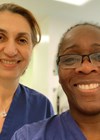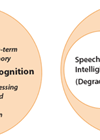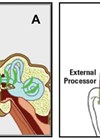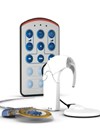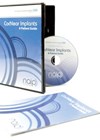Audiology features
Are today’s implantable hearing devices better than conventional devices for patients with conductive and mixed hearing loss?
In March 2014, we published a paper in ENT & Audiology News, with a similar title. Below, an updated overview is presented of available devices (early 2021) for patients with conductive/mixed hearing loss. The focus is on effectiveness. Patients with...
Barriers to cochlear implantation in low resource settings
The benefits of early detection and rehabilitation of hearing loss in children, especially through cochlear implantation, are unequivocal. However, access to these valuable resources is far from equal and universal. Identifying the barriers is the first major step in addressing...
The power of the multidisciplinary team in paediatric cochlear implant assessment
Marette, Kate and Justine from the Birmingham Paediatric Centre give a detailed insight into how their team works together to assess children and young people for potential cochlear implantation. Cochlear implants and the specialist MDT The multidisciplinary team in cochlear...
MDT assessment of children and adults with implantable acoustic devices (IADs)
Abi Asher, Clinical Lead for the IAD programme in Cambridge describes how hearing care professionals work together to make the best recommendation for the patient, in turn helping navigate through the various devices now on offer. Multidisciplinary teams (MDTs) are...
The ear-brain connection in cochlear implant users: learning to listen again
While the cochlear implant (CI) has been a tremendous success in restoring hearing to deaf individuals, the implantation outcome still varies across CI users [1]. Some demographic factors, such as duration of deafness, and peripheral factors, such as electrode placement,...
Semi implantable bone conduction devices: challenges and developments
Bone conduction mechanisms and history of bone conduction aids Bone conduction hearing devices work by stimulating hair cells via the bone conduction hearing pathways. These pathways are less well understood than the air conduction pathways, but recent research has shown...
2014: Are today’s implantable devices better than conventional solutions for patients with conductive or mixed hearing loss?
Patients with conductive or mixed hearing loss become candidates for amplification when reconstructive surgery is not viable. Three common amplification options are conventional acoustic devices, such as behind-the-ear devices (BTEs), (implantable) bone-conduction devices and active middle ear implants. The goal...
Long-term outcomes of children and young people with cochlear implants
Introduction Profound childhood hearing loss has a huge impact on early communication skills, the acquisition of spoken language, and hence on educational attainments and employment prospects. Over the centuries, educators of the deaf attempted to overcome the challenge by using...
Auditory brainstem implant results in adults and children
Background The auditory brainstem implant (ABI) has been developed from cochlear implant (CI) technology and is indicated for people who have anatomical abnormalities of the cochlea or dysfunction of the auditory nerve. The majority of people who have received an...
Music and cochlear implants
Introduction The introduction of multichannel cochlear implants (CIs) in the early 1980s provided children and adults with severe and profound hearing losses with greatly improved speech perception skills. In this paper, however, I am going to focus on an area...
Access to and uptake of cochlear implants in the UK
Assessing demands on cochlear implant (CI) services is very important for both commissioners and clinicians in anticipating clinical need and funding requirements. Commercial CI’s were introduced in the late 1980s. Initial funding was from charitable sources. The first major advance...
Cochlear implant referral: how can we do better?
Considerable progress has been made over the last few years in improving access to cochlear implantation (CI) in the UK for children and adults with severe to profound deafness. But we are still not treating children early enough, and we...




